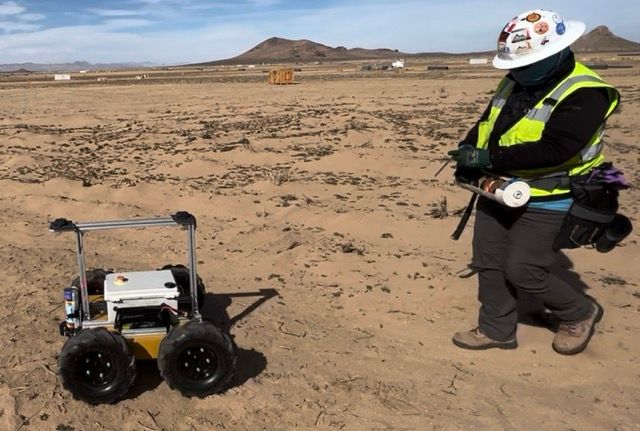Mortenson, a prominent player in renewable energy construction, was tasked with the monumental Edwards & Sanborn Solar and Energy Storage Project, one of the largest solar-plus-storage projects in North America. Faced with the challenge of installing approximately 400,000 piles, Mortenson required an innovative solution to scale their operations efficiently while maintaining precision.
Challenges:
Traditionally, Mortenson relied on manual surveying techniques, utilizing two-person crews for point-by-point marking. While effective for smaller-scale projects, this method was too labor-intensive and slow for the vast scope of Edwards & Sanborn. Mortenson needed a way to boost productivity and streamline their processes on such a large scale.
Solution:
To meet this challenge, Mortenson adopted CivDot and expedited the process seamlessly, without sacrificing precision or productivity.
Achieving Desired Targets From the Start:
CivDot enabled Mortenson to surpass their initial output target of 60 points per manhour—using two-person crew per robot. The process involved a crew chief calling out the pile color noted on the tablet, while the nailer installed the marker, ensuring efficient communication and marking.
Innovating with Creativity:
In response to CivDot’s enhanced productivity, Mortenson developed a custom solution to maintain pace. Instead of using standard nails with whiskers or flags, they opted for nails with ribbons to manage the variety of pile types and lengths. The nailer, equipped with a custom-made belt carrying ribbons in different colors, tied the ribbons to nails while moving, eliminating the need for preparation and ensuring they kept up with the robot’s pace.

Mortenson's operator using a custom made belt with CivDot
Streamlining Operations with Advanced Features:
Recognizing the gap in operational efficiency, Civ Robotics saw an opportunity to streamline the process. To address the need for more autonomy Civ Robotics introduced the “pause at” feature, allowing CivDot to automatically pause at key conditions like changes in coordinate description.
The integration enabled Mortenson to increase their output by more than 50% by having a two-person crew operate 2 CivDots instead of 1, increasing productivity to 120 points per manhour.
In addition, the seamlessness enabled operators to survey with CivDot alongside the shakeout crew instead of surveying prior to shakeout.
Results: Elevated Productivity and Efficiency:
With the "pause at" feature fully implemented, and with operators becoming proficient with the new system, Mortenson saw a significant leap in productivity. Operators managing CivDot solo eventually marked 200 points per hour, with peak performance reaching an impressive 300 points per hour. This remarkable efficiency accelerated surveying timelines.
The success of CivDot at the Edwards & Sanborn Project was so impactful that Mortenson expanded its use across multiple projects in states like Texas and Florida, consistently achieving outstanding productivity gains and cost savings.
A Partnership Driving Innovation:
Mortenson’s early adoption of CivDot didn’t just enhance their operations—it played a pivotal role in shaping the evolution of the technology. Their feedback led to the creation of key features that have since become standard across CivDot systems, marking the collaboration as a successful partnership in both innovation and execution.

Mortenson is a U.S.-based, top-25 builder, developer, and engineering services provider serving the commercial, institutional, and energy sectors.
Use Case: CivDot
Project Size: 864MW (~400,000 points)
Projects with CivDot: Numerous
Discover the power of CivDot+

